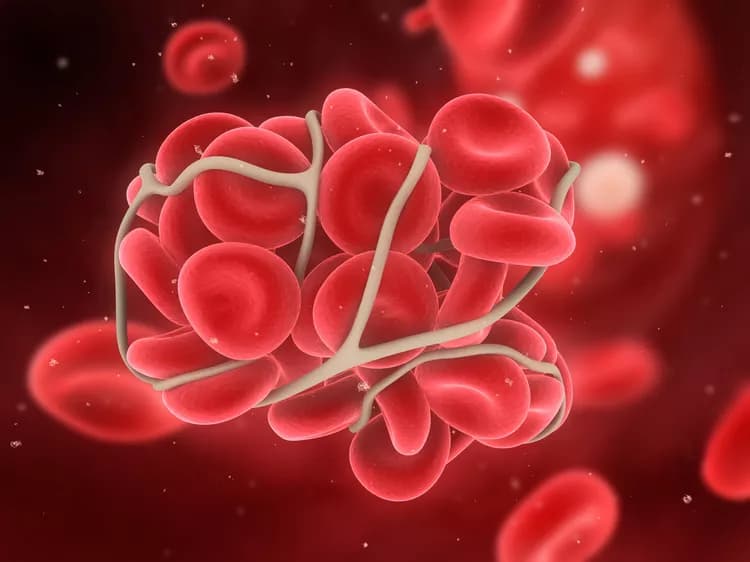
Self-Propelling Microparticles Could Help Stop Bleeding, Save Lives
A team of engineers and scientists from University of British Columbia (Canada), University of Washington (Seattle, USA), and Massachusetts General Hospital and Harvard Medical School (Boston, USA) have designed and successfully tested self-propelled particles in animal models of intra-operative and traumatic bleeding. The particles were effective in stemming the flow of blood by delivering coagulants millimeters into the vasculature of wounds.
Uncontrolled bleeding could result from trauma, during surgery, after childbirth, in hemorrhage, in an individual suffering from hemophilia, etc. Because blood flows outward, it is a challenge to deliver medicines such as coagulants, antibiotics, etc. when the bleeding occurs somewhere deep in the body. The speed and specificity of drug delivery is an important factor to be considered for designing a catalyst that would carry the therapeutics, which has been the focus of many research studies.
Talking about the practical issues of designing a catalyst, the senior author of the current study, Dr. Kastrup, states in the University of British Columbia News, “People have developed hundreds of agents that can clot blood, but the issue is that it’s hard to push these therapies against severe blood flow, especially far enough upstream to reach the leaking vessels.”
The ideal candidate, according to the authors, is Calcium Carbonate (CaCO3), which releases carbon dioxide (CO2) in acidic solutions and is capable of forming microparticles that are porous, facilitating absorption of protein. The particles, designed by the team, work by releasing CO2 and propel themselves toward the wound. The following were some of the experiments conducted and results obtained:
- The CaCO3 microparticles propelled themselves in blood up to a speed of 1.5cm per second.
- The propulsion of microparticles occurred through both stagnant and flowing solutions.
- The particles, because of the release of CO2 gas, propelled themselves upwards, against gravity.
- When the particles were made heavier (aggregates), their movement was observed to be lateral.
- The CaCO3 microparticles mixed with coagulating agents, such as Tranexamic acid (organic acid protonated) or Thrombin, were able to achieve the desired propulsion. The loaded particles still exhibited upward movement.
- 78% of mice with their tails amputated stopped bleeding with the microparticles powder application, compared to only 25% on those without treatment.
- In a liver puncture model of bleeding using fluorescent microparticles, there was a 10-fold accumulation of propelled, Thrombin-loaded particles at the wound site, when compared to non-propelled particles.
- In a simulated gunshot wound model in pigs, there was 100% survival of wounded pigs with microparticles application, compared to 0% survival (at 3 hours after injury, death due to hemorrhagic shock) without microparticles.
The results of the study show that these self-fueled microparticles could be used in actual wound situations to stop blood loss and promote wound healing. Although more vigorous tests and standardizations will be required before trial in humans, the concept of loading these particles with desired molecular cargo has been convincingly demonstrated in this study.
According to Dr. Kastrup, one immediate application could be following childbirth. He says, “The area we’re really focusing on is postpartum hemorrhage: in the uterus, after childbirth where you can’t see the damaged vessels but you can put the powder into that area and the particles can propel and find those damaged vessels.”
Written by Mangala Sarkar, Ph.D.
Primary References:
Baylis, J., Yeon, J., Thomson, M., Kazerooni, A., Wang, X., St. John, A., . . . Kastrup, C. (n.d.). Self-propelled particles that transport cargo through flowing blood and halt hemorrhage. (2015). Science Advances, 1(9), E1500379. (n.d.). Retrieved October 4, 2015, from http://advances.sciencemag.org/content/1/9/e1500379.full
UBC researchers create self-propelled powder to stop bleeding. (2015, October 2). Retrieved October 4, 2015, from http://news.ubc.ca/2015/10/02/ubc-researchers-create-self-propelled-powder-to-stop-bleeding/
Additional Reference:
Volodkin, D., Larionova, N., & Sukhorukov, G. (2004). Protein Encapsulation via Porous CaCO 3 Microparticles Templating. BioMacroMolecules, 5, 1962-1972.
Related Articles
Test Your Knowledge
Asked by users
Related Centers
Related Specialties
Related Physicians
Related Procedures
Related Resources
Join DoveHubs
and connect with fellow professionals

0 Comments
Please log in to post a comment.